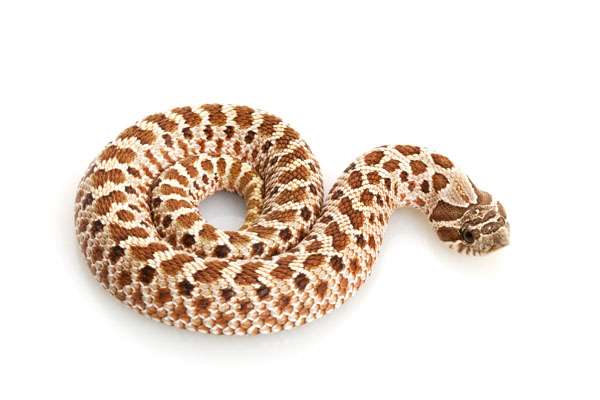
Description
Scientific Name: Heterodon sp.
Lifespan: 18-30 years
The term “hognose snake” is used to describe a variety of unrelated species of upturned-snout snakes that are members of two colubrid snake families and one pseudoxyrhophiid snake family. Hognose snakes are well known for their upturned snout/rostral scale, which makes it easier for them to dig sweeping motions in sandy soils. Additionally, they enjoy digging deep in humus.
Hognose snakes have a wide range of hues and patterns. Heterodon platirhinos can vary in colour from reds to greens to oranges to browns to melanistic (i.e. black) which depends on the locality. They might be solid colors or have spots on occasion. Leiohetereodon geayi is the scientific name for a brown or tan snake with dark markings. There are also a lot of other morphs that can be created in captivity.
Native Region/Habitat
They can be found in Madagascar, South America, and North America. It favours environments with sand or gravelly soils, which include river floodplains, prairies, scrub and grasslands, semi-deserts, and a few semi-agricultural areas.
Behavior
Known for their peaceful attitude, hognose snakes are diurnal (active during the day) species. In actuality, the eastern hognose (Heterodon) is widely recognised for its propensity to pretend dead when among predators. Hognose snakes rarely bite, but they will occasionally strike and flatten their necks when they sense danger. However, if they are handled frequently beginning at a young age, they may develop a reasonable level of calm around people.
The herpetological community is always debating whether hognose snakes ought to be regarded as venomous. In fact, they do produce venom in their saliva, which is harmless to humans but devastating to small prey animals. Furthermore, since hognose snakes rarely bite humans, it is unlikely that they would come into contact with the venom. Due to these reasons, the majority of snake specialists do not consider hognose species to be as dangerous as cobras and rattlesnakes.

Care as a Pet/In Captivity
Housing:
Hognose snakes don’t get very big, so all they need is room to spread out their entire body in the aquarium. Depending on how big your snake gets, a 20-gallon tank is frequently plenty for one snake. Consider floor space more important than height because these snakes rarely climb. To keep your snake secure in its enclosure, a tight lid is still advised. Give your snake a hide box where it can go to feel safe and a water dish that it can climb into.
Humidity:
Hognose snakes require humidity between 40 and 70 percent. The humidity level varies a little depending on the species, and while shedding, snakes seem to prefer a little more humidity. The enclosure’s water dish will supply humidity, but if you need to increase the humidity, you can also lightly spritz the enclosure. Use a reptile hygrometer to measure the humidity.
Food and Water:
In captivity, hognose snakes, especially Heterodon platirhinos, can be challenging to feed and may even reject food. Be consistent with what and when you feed them, and check that the temperatures in the enclosure are appropriate. To stay active and correctly digest their food, snakes require warmth. Furthermore, it is easy to tell when hognose snakes are hungry. They frequently walk up to their feeder with their mouths open, waiting for food.
Hognoses will initially eat calcium-powdered gut-loaded crickets (crickets fed nutritious meals). Depending on how big the species grows, they’ll develop into , fuzzies, pinkies and possibly adult mice as they become older. A couple times per week is sufficient for feeding young hognose snakes, and one prey item per week is usually sufficient for feeding fully developed snakes. It’s sometimes a good idea to cut back on feedings if you see that your snake is going to start shedding in order to avoid regurgitation.
Table





